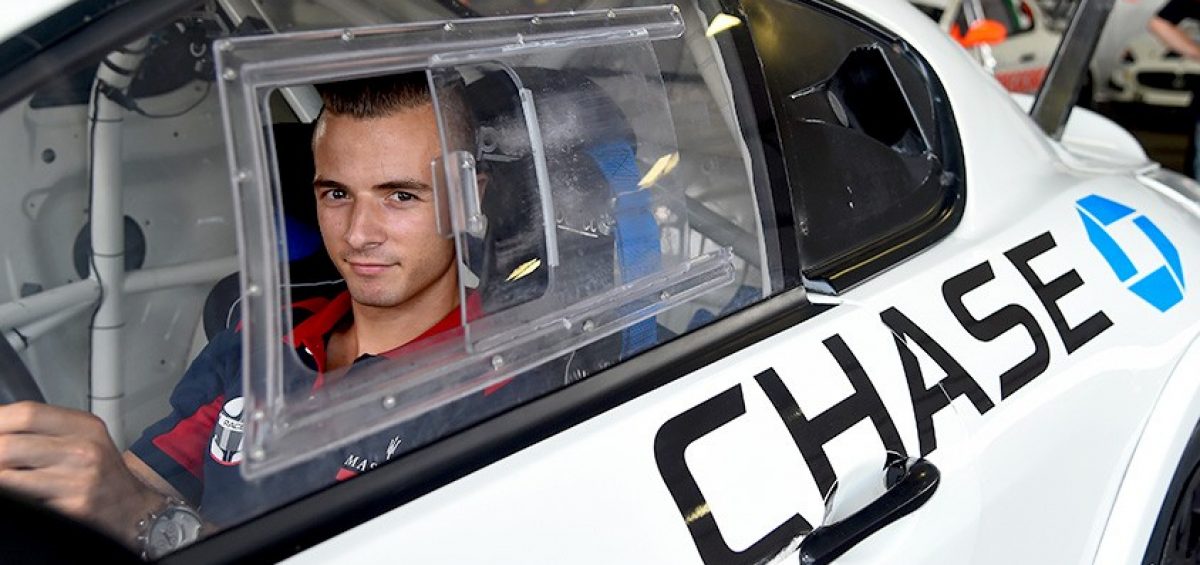Maserati Driver Was Racing Before He Was Old Enough to Get a License
Gianmarco Raimondo’s first car was a Jeep Grand Cherokee, but he had been sitting in the driver’s seat long before he turned 16.
His father, a doctor and sportscar enthusiast, introduced his 9-year-old son to kart racing after a patient suggested it. The sport, where drivers race souped-up go-karts (these aren’t your amusement park variety), is seen as a gateway to grooming drivers for professional racing. Raimondo says he was hooked after his first race.
These days, Raimondo is a professional driver for Maserati Trofeo. “Maserati is a big name, with a long history and huge reputation. It’s a privilege to race for them,” he said.
At the Virginia International Raceway recently, Raimondo drove a Maserati sponsored by Chase. These are high intensity races, but Raimondo doesn’t seem nervous.
“The car is a comfort zone for me,” he said during a pre-race interview. “All my issues go away when I am in the car. I just think about driving.”
Regardless of who he is racing for or racing against, Raimondo says he treats each competitor the same way. “I respect every driver and expect the same from them,” he said. As for bumping or crashing, he favors an old saying: “What happens on the track stays on the track.”
A lot of preparation goes into being a race car driver, and physical fitness is a big part of the art. “We do a lot of resistance training. And strength training as well. The lighter, the leaner, the better,” he said with a smile.
It Takes a Village
The driver is the face of a team, but it takes at least a dozen crew members — from the truck driver who hauls the car to races and the team manager who oversees the day-to-day operations to the mechanics who maintain the vehicle — to help him reach the checkered flag. For his mechanics, it could be the most simple-sounding thing. “Tire pressure adjustment is key,” said Raimondo. “Too high of a pressure will make the tire hot, and that isn’t good.”
Technology also helps him reach the finish line faster. “There are sensors in the car that collect all kinds of data,” he said.
And to familiarize himself with the Virginia track, Raimondo used a simulator to learn where and when to turn.
But he says he doesn’t rely solely on technology. One of his pre-race preparations is to walk or jog the track. “It is a good way to look for where you can or can’t pass,” he said. “It is also a good way to check for bumps, or any imperfections, as well as a way to gauge the angle of the banks.
His advice for those seeking to get into motor sports, or anything for that matter, is simple: “Never give up, trust yourself and stay focused on your goal.”
View Original Article at chase.com/gianmarcoraimondo
Greg Barbera is a freelance journalist based in Durham, N.C.

